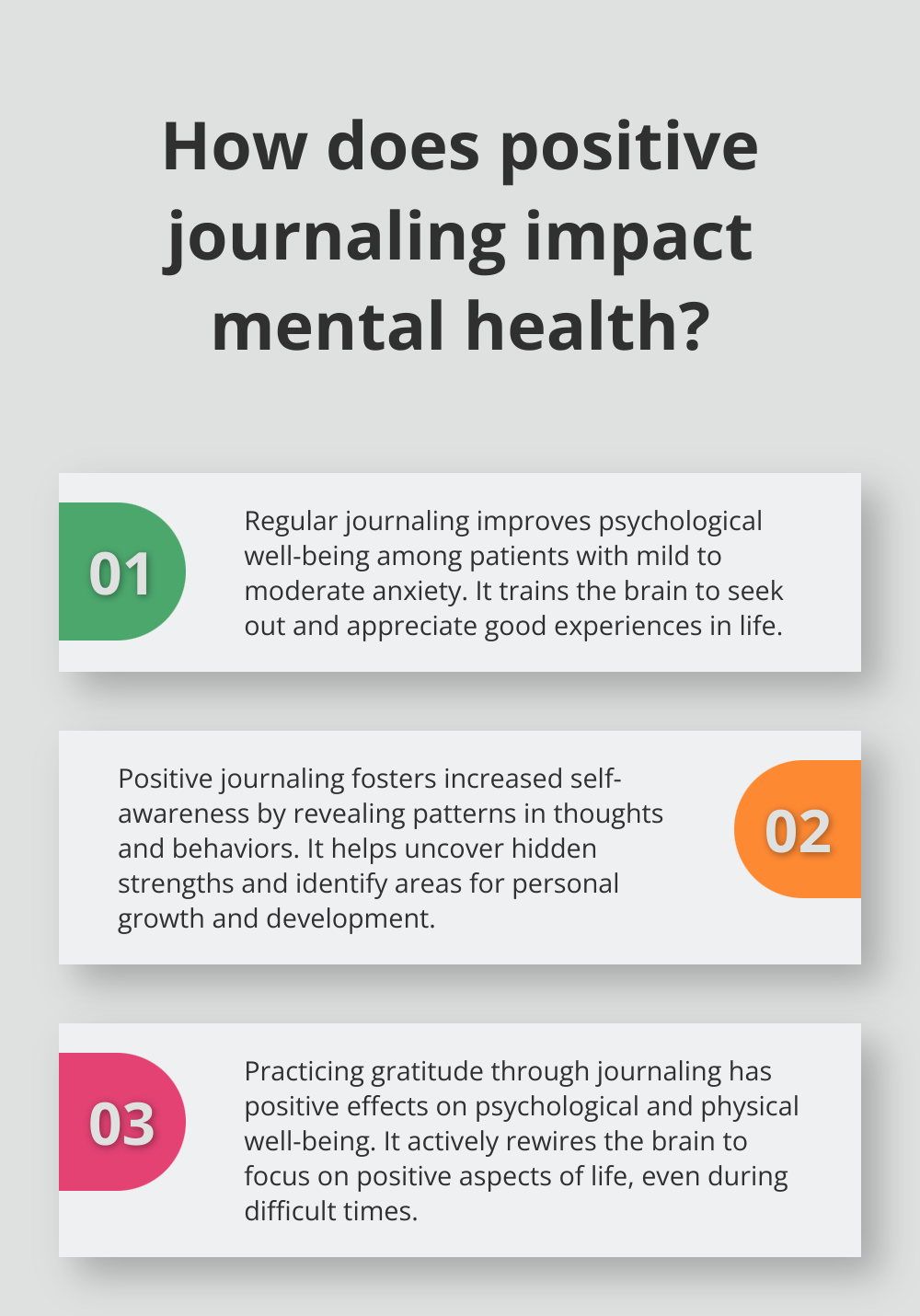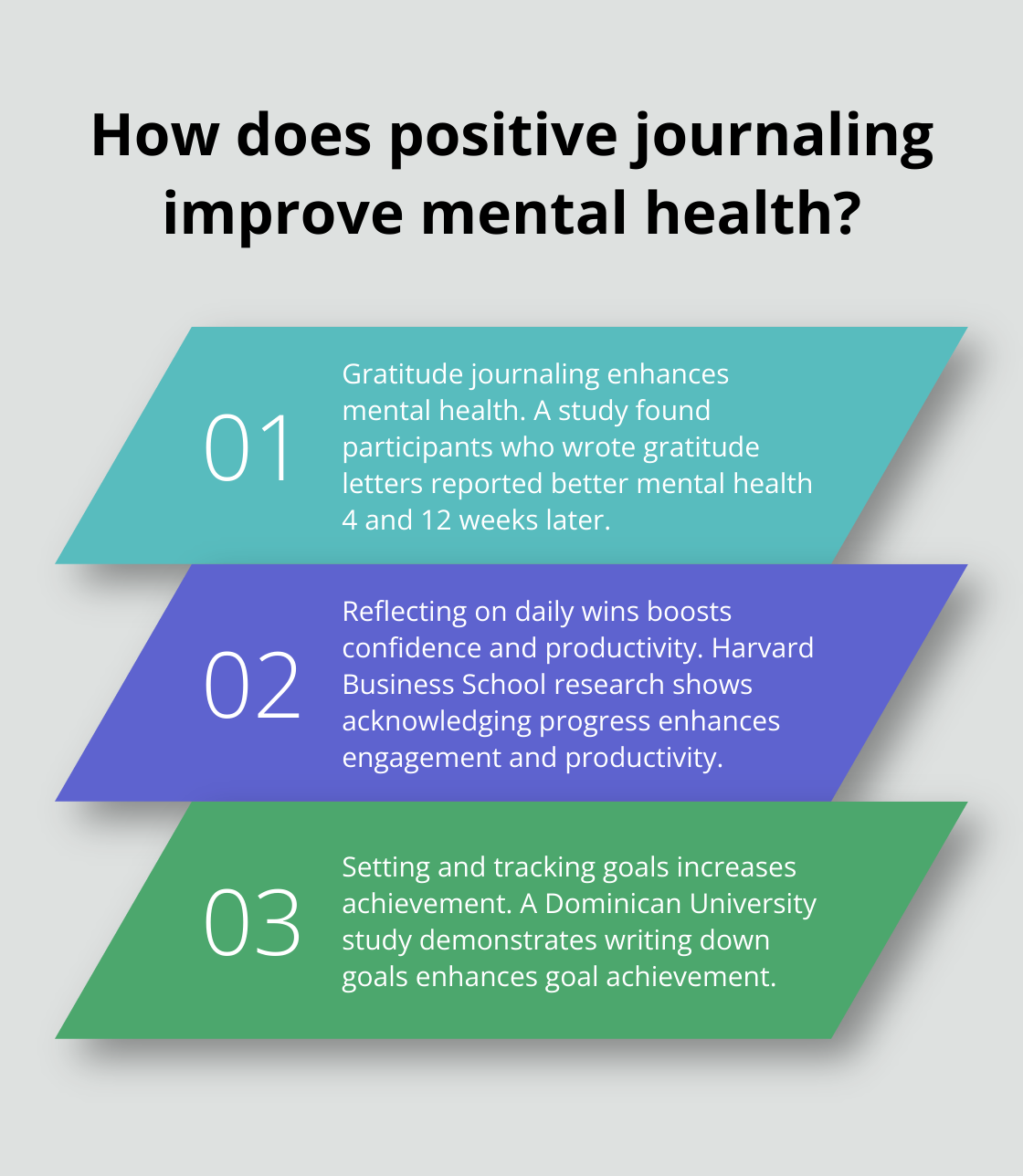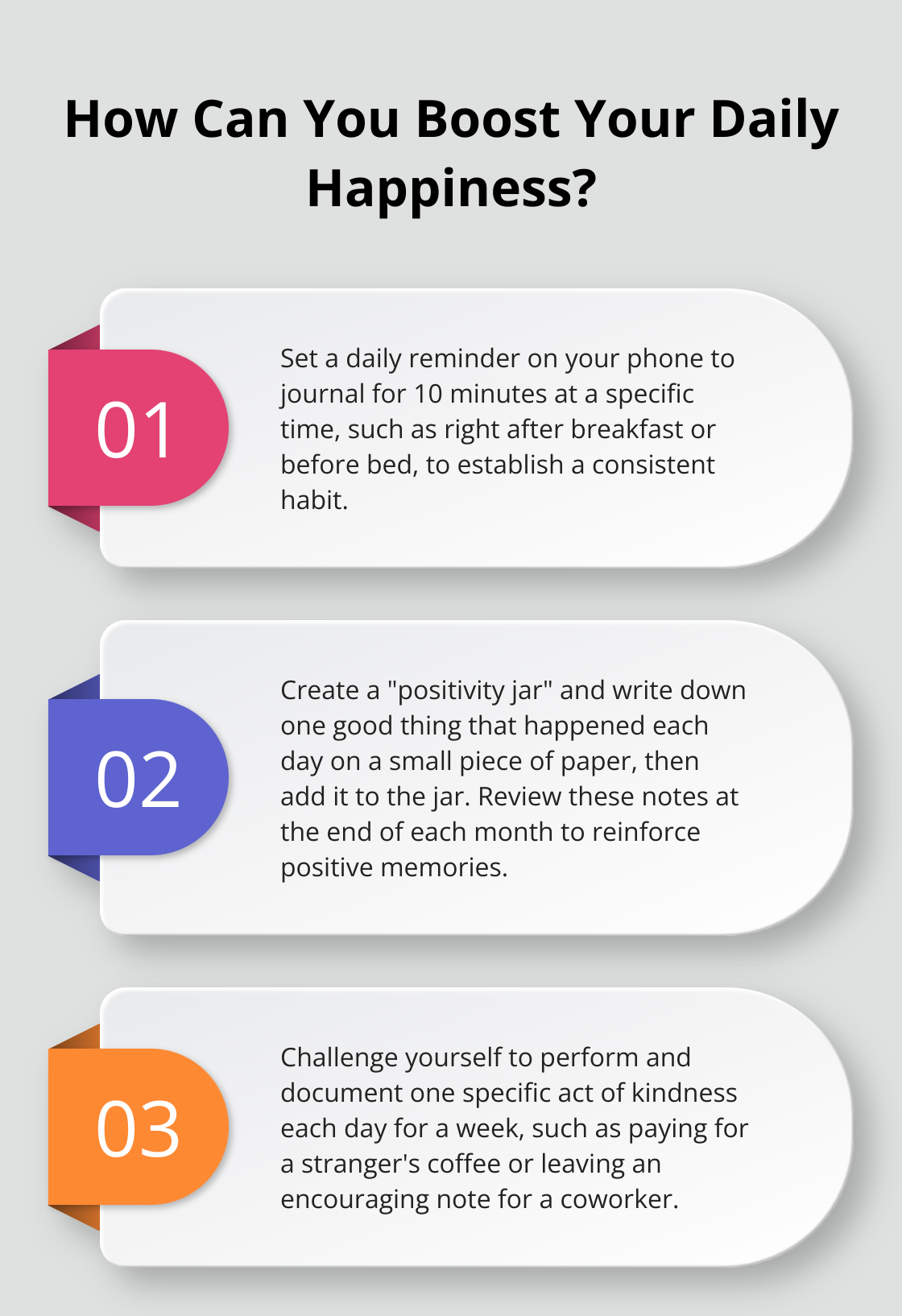At Global Positive News Network, we believe in the power of positivity to transform lives. Starting a positive daily journal can be a game-changer for your mental well-being and personal growth.
This simple practice allows you to focus on the good in your life, cultivate gratitude, and track your progress towards your goals. In this post, we’ll guide you through the process of beginning your own positive daily journal and reaping its many benefits.
Why Keep a Positive Daily Journal?
Transform Your Mental Health
Keeping a positive daily journal transcends trendy self-care practices. It serves as a powerful tool that significantly impacts mental health and overall well-being. Research demonstrates that regular journaling can improve several factors associated with psychological well-being among patients with mild to moderate anxiety. The act of focusing on positive experiences and emotions trains your brain to seek out and appreciate the good in your life. This perspective shift proves particularly beneficial for individuals who struggle with anxiety or depression.
Unlock Self-Awareness
One of the most valuable aspects of positive journaling is the increased self-awareness it fosters. As you document your daily experiences, you’ll notice patterns in your thoughts and behaviors. This insight becomes invaluable for personal growth and development. You might uncover hidden strengths or identify areas for improvement (which can be both exciting and challenging).
Embrace the Power of Gratitude
Gratitude forms a cornerstone of positive journaling, and for good reason. A study found that individuals who practice gratitude experience positive effects on psychological and physical well-being. Dedicating time each day to acknowledge what you’re thankful for actively rewires your brain to focus on the positive aspects of your life (even during difficult times).
Reduce Stress, Enhance Life
In our fast-paced world, stress and anxiety often feel overwhelming. Positive journaling provides a healthy outlet for processing emotions and reducing stress. Regular documentation of your thoughts and feelings creates a safe space to work through challenges and celebrate victories, no matter how small.
Cultivate Optimism and Resilience
A positive daily journal nurtures an optimistic outlook on life. Through consistent practice, you’ll develop the ability to find silver linings in challenging situations. This cultivated optimism contributes to increased resilience, enabling you to bounce back from setbacks more easily. The habit of recording positive experiences, no matter how minor, reinforces a mindset of hope and possibility.

As you embark on your positive journaling journey, you’ll discover that the benefits extend far beyond the pages of your notebook. The next step involves choosing the right tools and techniques to make your journaling practice both enjoyable and effective.
What Tools Do You Need for Positive Journaling?
Digital vs. Physical Journals
The choice between digital and physical journals is personal. Digital journals are confidential and password protected. They can be especially helpful for those with arthritis, as typing on a keyboard may be less painful than gripping a pen. However, many people prefer the tactile experience of writing in a physical journal, which can enhance their connection to the practice and improve retention of positive experiences.
Choosing Your Perfect Journal
Select a journal that inspires you visually and feels good to write in. Look for high-quality paper that doesn’t bleed through with your favorite pen. Some journals include built-in prompts or gratitude sections (helpful for beginners). The Five Minute Journal is a popular choice that can help boost positivity and reduce anxiety with just five minutes of daily practice.
Essential Journaling Tools
Invest in pens that make writing a pleasure. Gel pens or fine-tip markers can add color to your entries. Washi tape and stickers allow you to personalize your journal and mark important entries. For digital journalers, a stylus enables handwritten notes on tablets.
Creating Your Journaling Space
Designate a specific area for your journaling practice. This could be a cozy corner of your bedroom, a spot at your kitchen table, or even a favorite café. Ensure good lighting and minimal distractions. Some people find that lighting a candle or playing soft background music enhances their journaling experience.
Timing Your Journal Sessions
Consistency is key in developing a positive journaling habit. Experiment with different times of day to find what works best for you. Morning journaling often sets a positive tone for the day, while evening journaling allows for reflection on daily events. Try to set a realistic goal, such as 10-15 minutes per day, to start.

The most important aspect of positive journaling is the practice itself, not the tools you use. Start with what you have and refine your approach as you develop your habit. Now that you have your tools ready, let’s explore effective techniques to maximize the benefits of your positive journaling practice.
Powerful Techniques for Positive Journaling
Start with Gratitude
Begin each entry by listing three things you appreciate. This simple act sets a positive tone for your journaling session and trains your brain to look for the good in your life. A study published in the Journal of Happiness Studies found that participants who wrote gratitude letters reported significantly better mental health four weeks and 12 weeks after the writing exercise ended. Don’t just list items; describe why you’re thankful for them. For example, instead of writing “my friend,” try “I appreciate Sarah’s support during my job search. Her encouragement lifted my spirits when I felt discouraged.”
Reflect on Daily Wins
Take time to acknowledge your accomplishments, no matter how small. Did you complete a challenging task at work? Cook a healthy meal? Have a meaningful conversation with a friend? Celebrating these moments boosts your confidence and motivation. The Harvard Business School found that reflecting on progress enhances productivity and engagement. Ask yourself, “What did I do well today?” or “What accomplishment makes me proud?” This practice reinforces positive behaviors and helps you recognize your growth over time.
Set Intentions and Track Goals
Use your journal to set clear intentions for your day or week. Write down specific, achievable goals and the steps you’ll take to reach them. Research from the Dominican University of California shows that writing down goals enhances goal achievement. As you progress, document your journey. What obstacles did you face? How did you overcome them? This reflection process helps you learn from experiences and adjust your strategies for future success.
Document Acts of Kindness
Record instances where you’ve helped others or witnessed acts of kindness. This practice not only reinforces your connection to your community but also inspires you to continue spreading positivity. A study in the Journal of Social Psychology found that participants who performed kind acts for seven days saw a significant increase in happiness. Challenge yourself to perform and document one act of kindness each day, no matter how small. It could be as simple as holding the door for someone or sending an encouraging text to a friend.
Experiment with Different Approaches
Consistency is key in developing a positive journaling habit. Try 5-10 minutes a day and gradually increase as you become more comfortable with the practice. Your journal is a personal space for growth and reflection, so don’t worry about perfect grammar or eloquent prose. The most important thing is to be honest and open with yourself.

As you continue your positive journaling journey, you’ll likely discover personal techniques that resonate with you. Positive journaling can reduce your anxiety and is linked to decreased mental distress, helping you focus on the good and cultivate a more optimistic mindset even during challenging times.
Final Thoughts
A positive daily journal transforms your mental well-being and personal growth. You train your mind to focus on life’s positives through consistent gratitude, reflection, and intention-setting. This practice reduces stress, builds resilience, and fosters optimism, preparing you to face challenges with a brighter outlook.

Start your journaling practice with a few minutes each day, focusing on joys and gratitudes. The process will become more natural and rewarding as you continue. Patience is essential while you develop this habit, but each entry moves you towards a more mindful, appreciative life.
We encourage you to share your positive experiences, inspiring others to embrace optimism. Your journey might motivate friends and family to start their own journals (creating a ripple effect of positivity). At Global Positive News Network, we invite you to explore our uplifting content, which complements your journaling practice with daily doses of hope.




